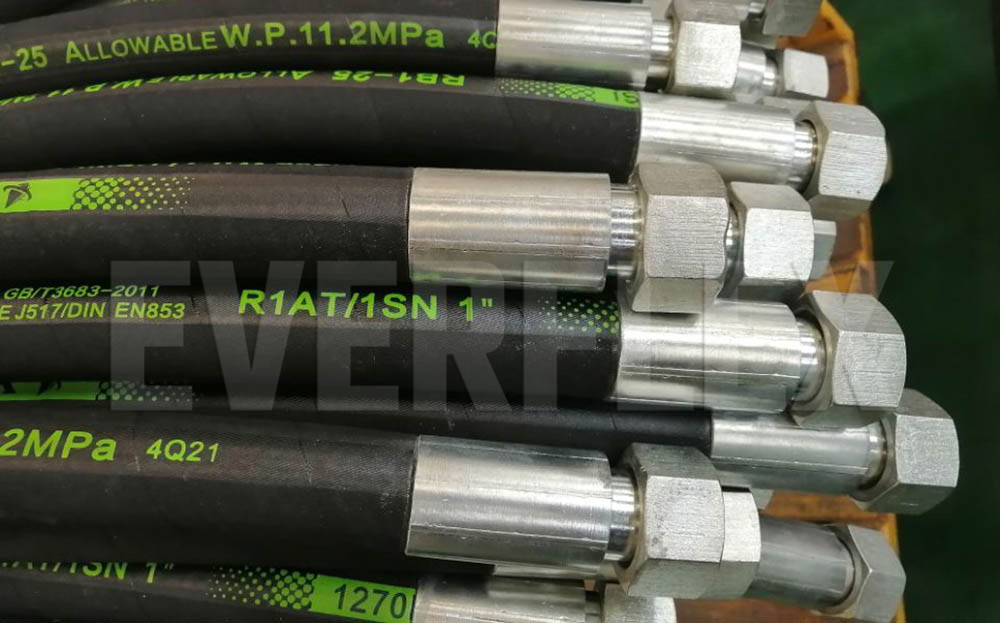Proper installation and regular maintenance of hydraulic hoses are essential to ensure proper system operation, extended service life, and safe operation. Here are some things to keep in mind when installing.
Choose the right hose
Choose the right hose based on the operating pressure, temperature range, media type (such as oil or other liquids), and environmental conditions. Make sure the hose inner diameter matches the system requirements to avoid excessive pressure drop or flow rate restrictions.
Correct bend radius
The minimum bend radius of the hose should not be less than the manufacturer’s recommended value, which is usually 8 to 10 times the hose outer diameter. Avoid sharp bends near the root of the connector and keep a straight section of at least 6 times the hose outer diameter.
Avoid twisting
Prevent the hose from twisting during installation. This will reduce the hose’s pressure-bearing capacity and shorten its life. You can mark the hose to check if the hose is twisted after installation.
Appropriate length
Allow a certain margin to account for the change in length (lengthening or shortening) of the hose when it is under pressure. Therefore, do not keep the hose in a taut state, which can reduce the pressure on the hose.
Protective measures
If the hose needs to pass through sharp edges or places where it may be abraded, a sheath or guard should be used. Besides, avoid direct contact between the hose and heat source, and use heat insulation materials if necessary.
Reasonable wiring
Hoses should be arranged as parallel as possible and fixed with clamps to prevent friction or entanglement. For connections between moving parts, ensure that the hose has enough slack to accommodate movement.
Appropriate end connection
Use appropriate connectors and ensure that the connection is firm and reliable. Check whether the connector is well sealed and leak-free.








